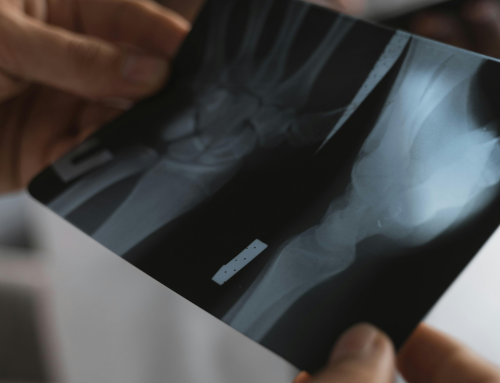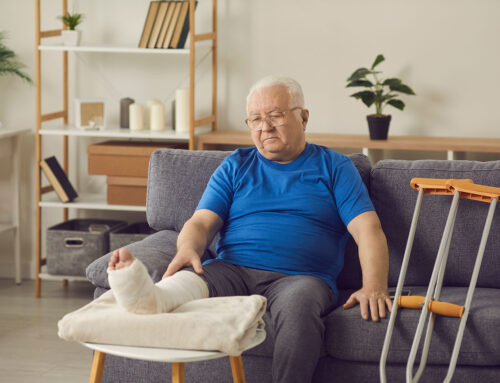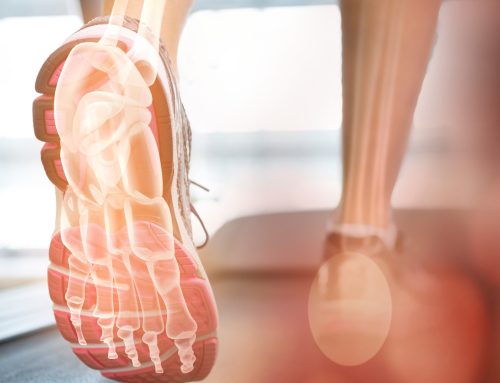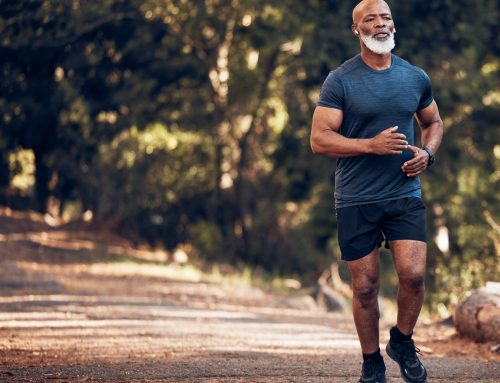We all know that exercise is essential for good health. The benefits of working out are numerous, including maintaining or losing weight, improving cardiovascular health, building muscle, strengthening the immune system, and improving mental health.
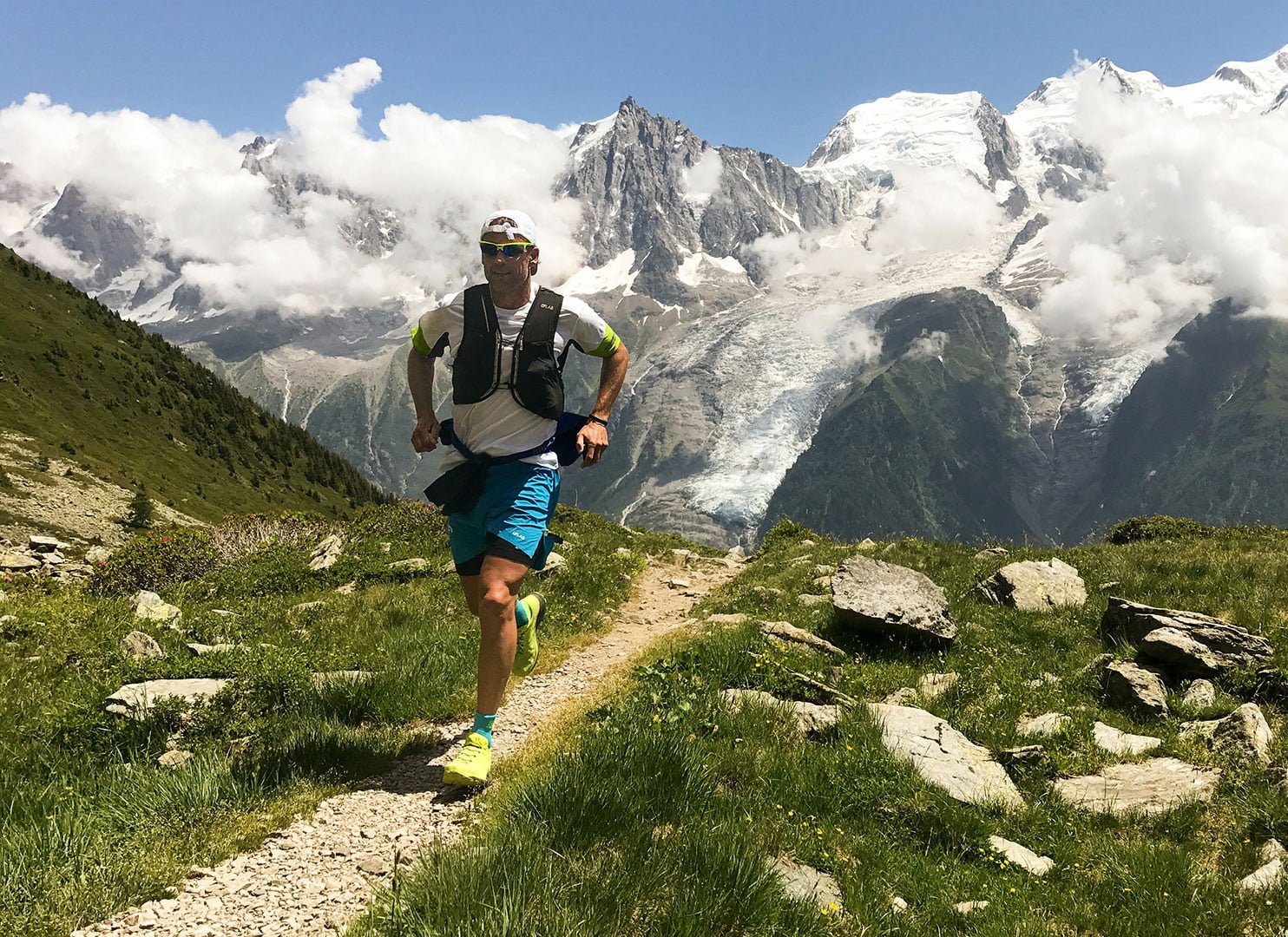
But regular exercise can also build and fortify strong bones, especially for children and adolescents. Doing a mix of aerobic physical exercise and muscle strengthening makes the living tissues in bones stronger. It also slows the loss of bone mineral density that happens as we age.
After the age of 40 years old, we gradually lose bone mass at a rate of approximately one percent per year. Exercise is key to keeping our bones dense.
Ensuring a mix of weight-bearing and strengthening exercises keeps bones strong
While low-impact sports like swimming and cycling are great for improving cardio fitness, it’s essential to also do weight-bearing and strengthening exercises. Our bones need to have pressure put on them, which forces the bone cells to adapt and react, in turn making them stronger and denser.
When we exercise and put pressure on our bones, the effects are body part specific though. For example, walking strengthens the leg and spine bones, but not the upper limbs. Whereas carrying a heavy load, like a bag of soil when gardening, can build up the muscle and bone health in the arms. So it’s important to do a healthy mix of activities that work all the body parts.
Exercises that work to strengthen balance and coordination are essential, especially as we get older, as they help prevent falls and fractures. Posture stretching and strengthening exercises are important for protecting and strengthening the spine and supporting muscles.
Starting off on the right foot
Before beginning any new exercise regime, discuss your plans with your doctor or a physical therapist, especially if you have osteoporosis or a condition with your bones. If you feel pain while doing an exercise, stop immediately, and discuss moving forward with your primary care provider.
Elderly people and those with osteoporosis should fit their exercise plan to their current strengths and weaknesses. Supports, like a wall or sturdy chair, should be used when doing balance activities when falls are likely. Bending or twisting the spine can also cause fractures, so should be avoided, especially in activities like yoga.
Make sure you get the most benefits from your exercise by also maintaining a good, healthy diet of nutritious food with adequate calcium and vitamin D. A healthy body weight is essential for bone health. Overweight and obese people are more likely to develop fractures and spinal deformities. But a low body weight also increases the risk of fractures and other bone problems at any age.
Eight bone-strengthening exercises
Want a healthy skeleton? These eight exercises will help build bones and slow the loss of mineral density.
1. Running or hiking
Hit the mountains or trails — running and hiking are excellent for fortifying the bones at a younger age. These activities are a full-body aerobic workout with the added pressure on the skeleton of supporting your body weight. Depending on your exercise level, age, and health of your bones, these activities may be more limited.
2. Weights and resistance exercises
Focus on strengthening your muscles and bones with strength training exercises like those using free weights, weight machines, or elastic resistance bands. Strength training targets bones that are most likely to fracture, such as the hips, spine, and wrists. Allow for at least one full rest day between weight training days in order to allow your body time to rebuild.
3. Dancing
A way to have fun, socialize, or just boogie around the home, dancing is a great stress reliever while also being an aerobic exercise and getting your heart racing. Dancing forces your body to work against gravity, fortifying the lower limbs.
4. Tai Chi
Tai chi is a gentle and relaxing exercise that improves balance and strength and helps slow bone mineral density loss. Research has found that older and at-risk adults who do tai chi one to three hours a week reduce their risk of falling by 43 percent.
5. Tennis and other racket sports
Hitting the courts to play tennis and other racket sports can have amazing benefits to our bones. Moving quickly, jumping, and sprinting all put pressure on the lower limbs, multiplying the weight-bearing effect of gravity. Hitting the ball back across the net works out the upper body. These high-impact sports can be dangerous for people with osteoporosis and the elderly though.
6. Squats
Squats light up the muscles in the legs and buttocks, strengthening the core and bones. It doesn’t need to be a deep squat for this exercise to be effective. Your back has to be straight the entire time, lean slightly forward to feel resistance. Use a counter or sturdy piece of furniture as a support for balance.
7. Check your posture and improve it
At any age, it’s a good practice to maintain good posture. It strengthens the core, spine, and bones, helps with maintaining balance and reducing strain on muscles, joints, and tendons. Check-in on your posture throughout the day, especially when sitting in a chair. Try movements like rolling your shoulders and standing up straight, lining up the ear, shoulder, elbow, hip bone, knee, and ankle.
People with osteoporosis or otherwise more prone to fractures should avoid curling forward and twisting the spine. Use pillows or rolled towels to support your back and head like sitting up or lying down.
8. Gardening and cleaning
Yes, even household chores can build and maintain healthy bones. Carrying heavy loads like groceries can exercise the back and arms. Gardening can work the leg and arm muscles, creating resistance, as well as allow for stress reduction. Use raised vegetable and flower beds so there is less bending forward. Avoid fast-growing plants and hedges that may require a lot of upkeep and pruning.
Doing your favourite workout activities and break a bone?
A fractured bone can happen to anyone at any age, regardless of diet, exercise level, and bone strength. To get back in the game sooner, consider low-intensity pulsed ultrasound (LIPUS) treatment which stimulates the bone to heal a fracture faster.
What are your favourite ways to exercise? How do you work to strengthen your bones? Please submit your ideas, suggestions, and questions in the comment section below.

